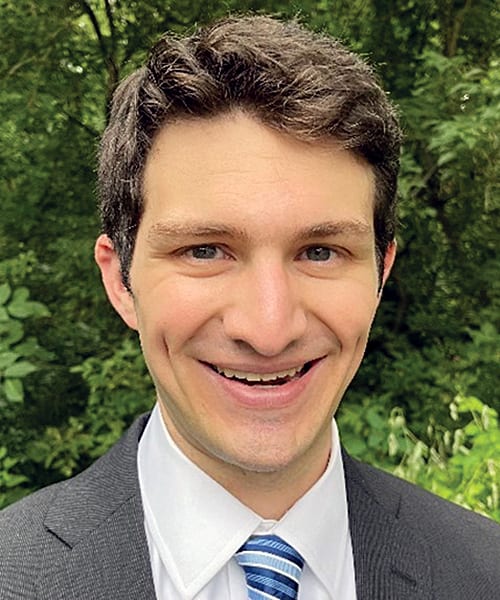acers spotlight
Society/Division/Section/Chapter News
For more information: ceramics.org
ACerS leaders for 2024–2025
ACerS is pleased to introduce the 2024–2025 Society leadership. New officers and directors will be installed at the 126th Annual Business Meeting on Oct. 7, 2024, at ACerS Annual Meeting at MS&T24 in Pittsburgh, Pa.
Society officers and directors
Executive Committee

1 – President: Monica Ferraris
Full professor of science and technology of materials; Politecnico di Torino; Turin, Italy
2 – President-elect: Mario Affatigato
Fran Allison and Francis Halpin Professor of Physics; Coe College; Cedar Rapids, Iowa
3 – Past President: Rajendra Bordia
George J. Bishop III Chair Professor of Ceramic and Materials Engineering; Clemson University; Clemson, S.C.
4 – Treasurer: Dan Tipsord
General manager; Trans-Tech; Adamstown, Md.
5 – Secretary: Mark Mecklenborg
Executive director; The American Ceramic Society; Westerville, Ohio
Board of Directors (new)

6 – Christopher C. Berndt
University Distinguished Professor; Swinburne University of Technology; Melbourne, Australia
7 – Ruyan Guo
Robert E. Clarke Endowed Professor of electrical and computer engineering; The University of Texas at San Antonio; San Antonio, Texas
8 – Rodney Trice
Professor; School of Materials Engineering; Purdue University; Lafayette, Ind.
Board of Directors (returning)

9 – Alexandra Navrotsky
Regents Professor Director; Navrotsky Eyring Center for Materials of the University; Arizona State University; Tempe, Ariz.
10 – Todd Steyer
Chief engineer for materials and manufacturing R&D; The Boeing Company; Huntington Beach, Calif.
11 – Dileep Singh
Senior scientist and group leader; Applied Materials Division; Argonne National Laboratory; Argonne, Ill.
12 – Marissa Reigel
Senior R&D manager; Saint-Gobain NorPro; Stow, Ohio
13 – Joseph Cesarano
President and founder; Robocasting Enterprises LLC; Albuquerque, N.M.
14 – Winnie Wong-Ng
Research chemist; National Institute of Standards and Technology; Gaithersburg, Md.
15 – Parliamentarian: Stephen Freiman
Freiman Consulting Inc.; Potomac, Md.
ADVERTISEMENT
ACerS offers reduced dues for members in developing and underdeveloped countries
The American Ceramic Society’s core purpose is to serve its members. One of the ways the Society upholds this purpose is to develop a strategic plan with specific goals.
Under the current strategic plan (2022–2024), increasing the number of international members within the Society is a major goal.
“ACerS has long valued the engagement and leadership of our international members who have enriched the society in multiple ways,” says Rajendra Kumar Bordia, ACerS president. “The scientific and technological enterprise benefits greatly from collaborations and learning from international colleagues.”
Among the initiatives underway to accomplish this goal, the Society is now offering reduced dues membership options for professionals and graduate students who currently reside in developing and underdeveloped countries. Eligible countries are based on those defined as Low-Income or Lower-Middle-Income Economies by the World Bank: https://ceramics.org/world-bank-classifications-for-developing-countries.
“In multiple discussions with our international members, we have learned that, in some countries, one of the barriers to joining ACerS is high cost of annual memberships,” Bordia says. “This initiative is a direct result of ACerS being sensitive and responsive to the needs of our international members.”
New members may learn more about the reduced dues offer and apply by visiting ceramics.org/reduced-dues-membership. Current ACerS members that reside in these areas will have the opportunity to renew their ACerS Individual or GGRN membership at the reduced rate(s) shown in the table.
“We request ACerS members to encourage their colleagues who reside in the developing and underdeveloped countries to take advantage of this program and join ACerS,” Bordia says.
David John Green, ACerS past president and DLM, 1947–2024
David John Green died on Aug. 13, 2024, at the age of 76. He was an ACerS Fellow (1991), past president (2013–2014), and Distinguished Life Member (2015).
Originally from Manchester, England, Green graduated with a B.S. in chemistry from the University of Liverpool, England, and with M.S. and Ph.D. degrees in materials science from McMaster University, Canada. During his graduate studies, he worked on microstructural aspects of fracture in ceramic materials. In particular, he demonstrated the importance of microcracking in the fracture of zirconia-based materials and also developed a specialized technique called ultrasonic fractography for studying crack–particle interactions in brittle materials.

In 1975, Green joined the Canadian Federal Government to work in the Department of Energy, Mines, and Resources. The primary emphasis of this work was concerned with the preparation of ultrafine, homogeneous ceramic powders for the fabrication of solid electrolytes for use in energy conversion and storage systems.
Joining Rockwell International Science Center in 1979, Green continued to study the relation between fabrication, microstructure, and the properties of ceramic materials. In particular, he contributed to the design of the heat shield and other aspects of the Space Shuttle projects during this time.
From 1984 until his retirement in 2013, Green served as a faculty member in the Department of Ceramic Science and Engineering at The Pennsylvania State University. His research on the mechanical behavior of porous ceramics during sintering and in use, as well as on the design of residual stresses to strengthen and arrest cracks in brittle materials, gained significant global attention.
Elizabeth Dickey, the Teddy and Wilton Hawkins Distinguished Professor at Carnegie Mellon University, remembers her time at Penn State with Green fondly.
“As a graduate student, I looked up to Dave as a luminary in ceramics research. As a colleague, I had the privilege of witnessing his dedication as an educator and mentor. As a friend, I cherished his passion for life and his genuine love for his wife, Keiko. I will remember him as a true gentleman, whose great optimism and spirit touched everyone he met,” she says.
Green was an active member of The American Ceramic Society. Notably, he served as vice president of the Publications Committee (1994–1996) and as senior editor of Journal of the American Ceramic Society (2003–2016). In these roles, he focused on ensuring a fair, fast, and comprehensive paper review process, which “made a real difference,” says Mark Mecklenborg, ACerS executive director.
Green was not only committed to inclusive participation within ACerS journals but the Society as a whole, as evidenced by his priorities as ACerS president. During his presidential year, he formed a committee to identify and suggest solutions to improve diversity within the Society. He also worked to strengthen ties between ACerS and other ceramic societies in the Americas, as well as helped lead the rollout of the newly established Ceramic and Glass Industry Foundation in 2014.
In 2005, Green was awarded the Basic Science Division’s Robert B. Sosman Award, which recognizes outstanding achievement in an area of basic science that results in a significant impact on the field of ceramics.
Green leaves behind many close colleagues and friends, including Bill Fahrenholtz, past editor-in-chief of Journal of the American Ceramic Society (2017–2022).
“In Fall 2016, before I assumed the position of editor-in-chief of JACerS, we had several meetings in which he helped me learn the complexities of the editorial management system as well as the more practical aspects of overseeing the journal,” Fahrenholtz says. “I had the utmost respect for David’s accomplishments as journal editor and as a ceramic researcher.”
Outside of research and ACerS, Green enjoyed ballroom dancing with his wife, Keiko Green. As he would often say with a smile, “We’ll ballroom dance to the Beatles if we have to!”
Greater Missouri Section/Refractory Ceramics Division 60th Annual Symposium: March 26–27, 2025
The ACerS Greater Missouri Section and Refractory Ceramics Division will coorganize the 60th Annual Symposium on Refractories from March 26–27, 2025, in St. Louis, Mo., at the Hilton St. Louis Airport Hotel. This year’s theme is “Modeling and simulation and its potential and practical use in the refractory industry.” Co-program chairs are Rebecka Annunziata of Arcelor Mittal and Brady Gould of Christy Refractories. A kickoff event will be held the evening of March 25, 2025.
For further information, please contact Patty Smith at (573) 341-6265 or psmith@mst.edu.
GOMD announces travel stipend for students presenting at ICG 2025
The ACerS Glass & Optical Materials Division is sponsoring eight stipends in the amount of $1,000 each to help support students attending ICG 2025 in Kolkata, India. These stipends are for students who have submitted and have been accepted to present their abstract at the conference. The stipends will be awarded to students from eight different universities.
For more information and how to apply, visit the webpage.
Mark your calendars: 2025 ACerS Mentor Programs registration opens soon
ACerS Mentor Programs facilitate knowledge transfer, skill development, and career guidance by pairing seasoned professionals with emerging talents. These year-long programs are offered for students, faculty, and industry.
Registration to participate as a mentor or mentee in the 2025 ACerS Mentor Programs will open in fall 2024. Learn more.
Member Highlights
For more information: ceramics.org/members
Volunteer Spotlight: Ricardo Castro
ACerS Volunteer Spotlight profiles a member who demonstrates outstanding service to the Society.
Ricardo Castro is chair and professor in the Department of Materials Science & Engineering at Lehigh University. He received a B.S. in molecular sciences and a Ph.D. in metallurgical and materials engineering from the University of São Paulo, Brazil. Before joining Lehigh in the fall of 2022, Castro was a tenured professor at the University of California, Davis, for more than 14 years. He also served as associate dean of research and graduate studies for three years while at UC Davis, a role that gave him experience working on events and professional development programs.
Castro’s work focuses on the fundamental understanding of nanomaterials and their behavior under processing and service in extreme environments, such as high temperatures, complex chemistries, and radiation.
Castro has a long history of activities with ACerS. After joining the Society as a member of the Basic Science Division in 2007, he started getting involved as a symposia organizer for ACerS Annual Meeting at MS&T in 2009. He is now vice president of the Basic Science Division, as well as editor-in-chief of ACerS’ gold open-access journal, International Journal of Ceramic Engineering & Science.
Castro was awarded the Robert L. Coble Award (2014) and the Engineering Ceramic Division’s Global Young Investigator Award (2015) for his accomplishments in the understanding of nanodensification. He became an ACerS Fellow in 2019.
We extend our deep appreciation to Castro for his service to our Society!

ACerStudent Engagement: Hugh Smith
Hugh Smith is a Ph.D. student studying materials science and engineering at Massachusetts Institute of Technology and serves as a member of the ACerS President’s Council of Student Advisors (PCSA). Smith has volunteered for several outreach events through ACerS and currently serves as chair of the PCSA’s Education Committee.
“I started engaging with ACerS and the PCSA as an undergraduate and have continued my engagement into graduate school. As this year’s chair of the PCSA’s Education Committee, I have worked to lower the barrier to entry to engage kids with materials science activities.”
You can take advantage of these opportunities as well by becoming a student member of ACerS. Visit https://ceramics.org/membership/types-of-membership to learn more.

Names in the news
Members—Would you like to be included in the Bulletin’s Names in the News? Please send a current head shot along with the link to the article to mmartin@ceramics.org. The deadline is the 30th of each month.
The TKD Foundation, co-founded by the late Thomas E. “Ted” Day and his wife, Kimberly A. “Kim” Day, permanently funded the Richard K. Brow Chair of Glass Science endowment at Missouri University of Science and Technology.
The endowed chair is named after ACerS Distinguished Life Member and Fellow Richard K. Brow, Curators’ Distinguished Professor of materials science and engineering. Brow joined Missouri S&T in 1998 as a professor of ceramic engineering and senior investigator in the Graduate Center for Materials Research. He was named chair of ceramic engineering in 2001 and was the founding chair of the materials science and engineering department.

Richard Brow, left, and Kim Day at the TKD Foundation headquarters in Rolla, Mo.
Credit: Andrew Layton, Missouri S&T
Awards and Deadlines
For more information: ceramics.org/members/awards
Nomination deadlines for Division awards: Jan. 15, Jan. 21, and Jan. 31, 2025.
Contact: Vicki Evans

xx

xx
CGIF collaborates with Belden Brick Company on Industry Tour for Teachers
By Charlee Gutridge, CGIF intern
Bricks are known as much for their durability as they are for their aesthetic appeal. Whether viewing the warm reds and browns one typically associates with traditional brick, or the sleek glazed brick designs adorning modern hospitals and universities, brick offers a remarkable range of possibilities.
For more than 100 years, The Belden Brick Company has been at the forefront of brick industry changes, adding innovation and guidance at their brick plants in Sugarcreek, Ohio. These innovations would not be possible without a passion for brickmaking. This passion led the leadership at Belden to collaborate with the Ceramic and Glass Industry Foundation (CGIF) on an Industry Tour for Teachers.

A Belden Brick employee, left, explains to teachers how bricks are made during the CGIF Teacher Industry Tour on June 27, 2024.
Industry Tours for Teachers is an ongoing program by the CGIF to give educators a behind-the-scenes look at different companies in the ceramic and glass materials communities. The tour at Belden took place on June 27, 2024. It began with a warm welcome from Bob Belden, CEO and vice president of operations at Belden. Bob is a fifth-generation brickmaker, and his knowledge and passion for the industry was apparent from his first introduction. He shared the company’s long history of quality brickmaking and then introduced several other tour guides, all executives within the company who had taken time out of their day to share their company with the visiting educators.
The teachers were split into small tour groups of four or five, and each group learned about the decades of brickmaking innovation from the very people that run the daily operations. From workers individually scoring and hand laying bricks in almost 100-year-old beehive kilns, to bricks being dried in kilns the size of a football field, to automated machines cutting and laying brick by the hundreds, educators gained a deep understanding of brick and its importance to today’s world.
To learn more about the Belden Brick industry tour and view other events and program offerings from the CGIF, visit the CGIF website.



